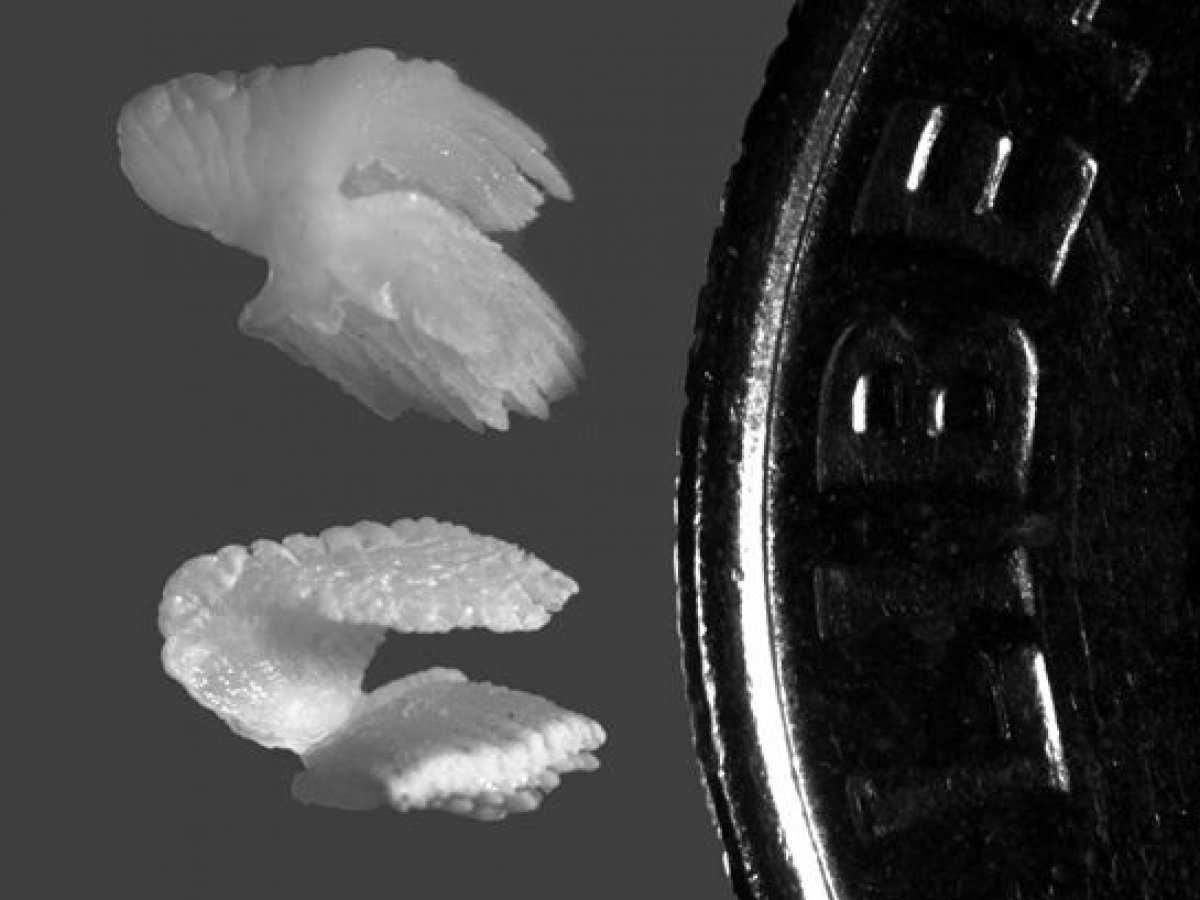
Off the coast of Hawaii in 2009, two fishermen caught an enormous grander blue marlin weighing in at 1,245 lbs and measuring 12.2 feet long. Conservationists wondered, how long does it take for these animals to reach this size? It turned out that the answer lies in tiny bones in the marlin's ears, according to a new report.
Although the animal was huge, certain ear bones (called "otoliths") are, in this animal, each the size of half a grain of rice. What's special about otoliths, as opposed to other types of bones, is that the cells in otoliths don't get slowly re-absorbed and replaced. Instead, the inside of the otolith is the same as it was the day the fish was born, and it slowly grows more bone around it, like the rings of a tree.

"This ear bone is actually more like a stone," Allen Andrews, a research fisheries biologist at the National Oceanic and Atmospheric Administration (NOAA) told Newsweek. "It grows like a mineral. As the fish swims around in its environment from when it's born to when it's caught, it actually records a history of its environment."
Jeff Sampaga, a biological science technician with NOAA fisheries, removed the otoliths from the enormous marlin head. Then Andrews analyzed them and found radiocarbon signatures in certain layers of the otolith. He knew that in the 1950s and 1960s, nuclear bomb testing took place all over the world and left an impact on the ocean, and that he could use that impact as a marker of time.
"It's this long slow rise," Andrews said of the mark left on marine habitats by the testing. "It takes about 10 years to reach the ocean." He explained that the radioactivity went up into the atmosphere, circulated around the planet, and then returned to the ocean, leaving in fish radiocarbon signatures that slowly decrease in intensity over time.
By examining the otoliths and understanding the amount of radioactivity into which the fish was born, Andrews found that this individual marlin was only 20 years old when it died. Marlins may live up to 20 or 30. Although some larger marlins have been recorded, this one appears to have achieved its adult size, meaning that marlins must grow rapidly and achieve immense sizes in just 20 short years.

Andrews recently published his research on this marlin and the technique he used to age it in the Canadian Journal of Fisheries and Aquatic Sciences. This study is the first time that a bomb has been used to confirm the age of a marlin, he says, and it's good news for fisheries. The fact that marlins grow so fast means that a population of marlins can replace their largest members more quickly than we had thought because they can grow to such immense sizes in two decades.
Uncommon Knowledge
Newsweek is committed to challenging conventional wisdom and finding connections in the search for common ground.
Newsweek is committed to challenging conventional wisdom and finding connections in the search for common ground.
About the writer
Kristin is a science journalist in New York who has lived in DC, Boston, LA, and the SF Bay Area. ... Read more
To read how Newsweek uses AI as a newsroom tool, Click here.








